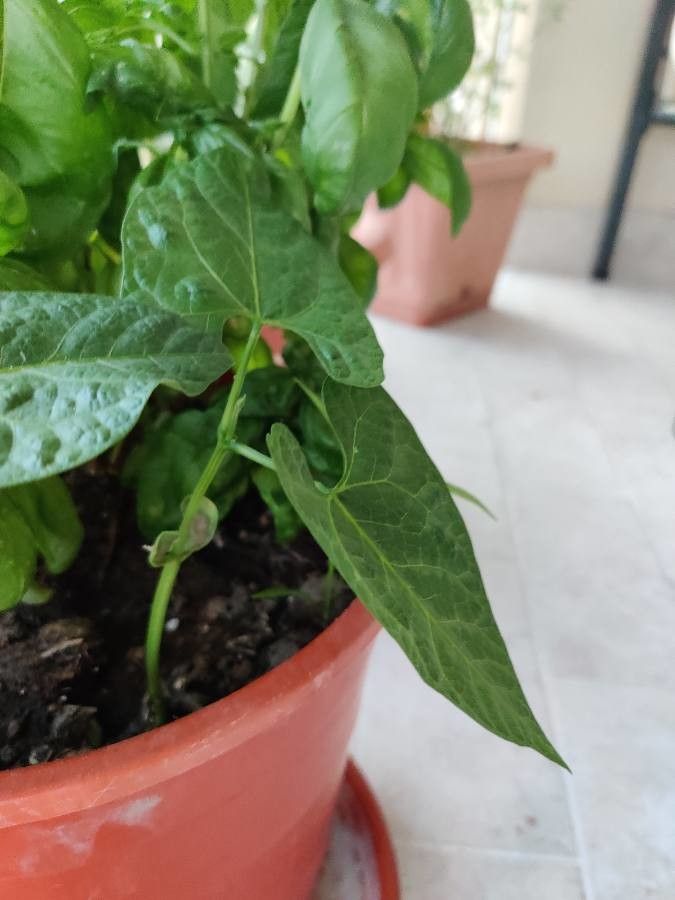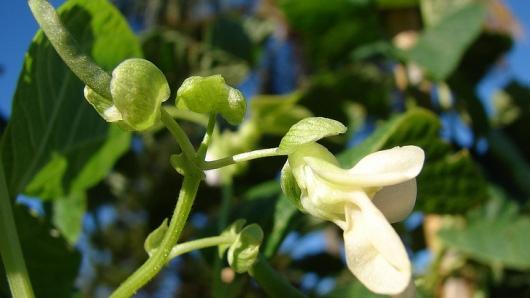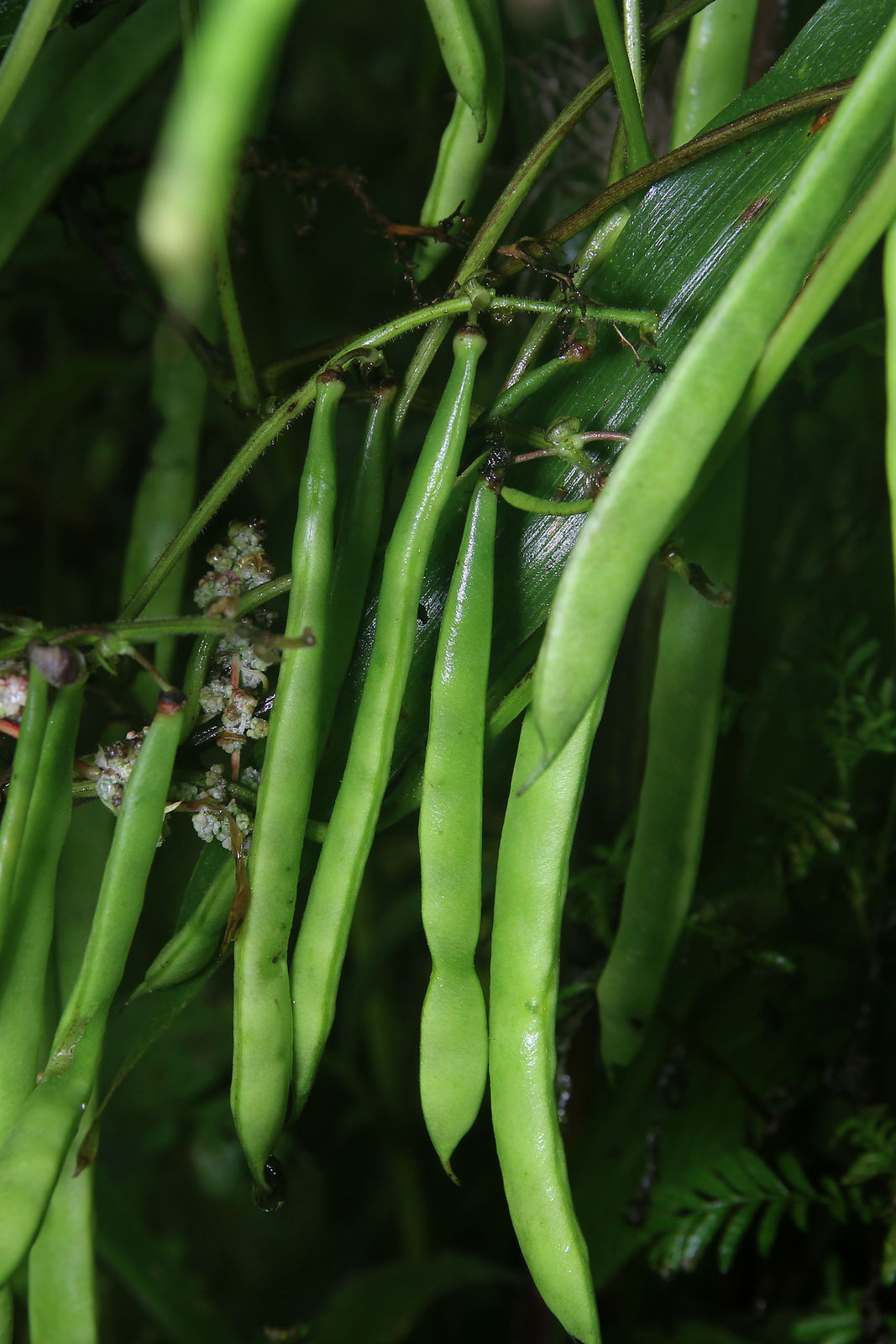Common Bean
phaseolus vulgaris
Also known as: ["Green Bean","String Bean","French Bean"]
Overview
A widely cultivated annual plant in the legume family, valued for its edible pods and seeds.
Benefits & Perks
["edible fruits","fast growing","disease resistant"]
Botanical Classification
| Phylum: | Magnoliophyta |
| Class: | Magnoliopsida |
| Order: | Fabales |
| Family: | Fabaceae |
| Genus: | Phaseolus |
| Botanical Name: | Phaseolus vulgaris |
Plant Characteristics
Basic Information
- Category: Vegetables
- Suitable Location: outdoor garden bed in full sun
- Suitable For:
- Is Weed: No
- Allergenicity: low
Environmental Needs
- Climate: {"temperatureRange":"10–35°C"}
- Hardiness: {"zones":"2–11"}
- Misting: rarely required, only if ambient humidity is very low
- Drainage: Moderate to fast-draining.
- Soil Type: Rich, well-draining loam with organic matter.
Maintenance Level
- Maintenance Level: moderate
- Toughness Level: moderate
- Pruning Frequency: As needed; lightly prune throughout growing season; major pruning in early spring.
- Pruning Intensity: Light to moderate; avoid heavy pruning during flowering.
Care Details
Ideal Sunlight Coverage:
Full sun (6–8 hours/day); partial shade in extreme heat; adjust based on seasonal intensity.
Sunlight Tolerance Tips:
Acclimate new plants gradually; protect from harsh midday sun; provide shade during peak summer.
Care Requirements
Care Difficulty
easyeasy
Sunlight
full sun
Rotate plants for even light; use reflective surfaces to boost light; monitor for sunburn.
Watering
every 3–5 days during active growth, reduce in winter
Water at the base to avoid foliage disease; ensure soil dries between waterings; adjust for growth stage.
Soil
well-drained, loamy soil with moderate organic matter
pH: Slightly acidic to neutral (6.0–7.0).
Test pH annually; amend with lime if too acidic; avoid heavy clay soils.
Temperature
Warm conditions (65–85°F/18–29°C); prefers stable temperatures; avoid frost.
Avoid sudden temperature shifts; protect from drafts; maintain humidity in dry heat.
Fertilizing
every 4–6 weeks during growing season with balanced fertilizer
Dilute to half strength; fertilize after watering; avoid contact with stems.
Propagation
Methods
Seeds or stem cuttings.
Step-by-Step Propagation Guide
- Prepare medium.
- Plant seeds or cuttings.
- Maintain moisture.
- Provide warmth.
- Transplant when rooted.
Best Time: Spring or early summer for optimal root development.
Environment
Warm (70–75°F/21–24°C), high humidity, and bright indirect light.
Medium
Well-draining seed-starting mix or perlite and peat moss.
Hormone
Optional for cuttings; rooting hormone can speed up process.
Timeline
Seeds: 7–14 days to germinate; cuttings: 2–4 weeks to root.
Tools Needed
Seed trays, pots, rooting hormone, misting spray, heating mat.
Quick Tips
Use bottom heat for faster germination; keep soil consistently moist; thin seedlings as needed.
Pruning & Repotting
Pruning Guide
Method
Pinch back tips for bushiness; trim leggy stems; remove yellowing leaves.
Pruning Plan
Remove dead or diseased growth; encourage bushier plants; improve air circulation.
Tools
Pruning shears, scissors, gloves.
Checklist
Sterilize tools; prune during dry weather; remove only necessary parts; clean up debris.
Repotting Guide
Best Season
Early spring before active growth begins.
Pot Size
One size larger pot (2–3 inches wider); ensure bottom drainage.
Method
Use fresh potting mix; ensure good drainage; gently tease out root bound plants.
Suggestions
Repot annually or when roots outgrow container; beneficial for growth and vigor.
Checklist
Check root health; prepare new pot; use fresh soil; water after repotting.
Advanced Care Tips
Watering Mastery
Watering Checklist
Check soil moisture; water deeply; ensure drainage; adjust for season.
How to Apply Water Properly
Water thoroughly until it drains from the bottom, ensuring even moisture reaches the root zone; avoid wetting leaves.
Watering Schedule Tips
Water deeply once the top inch of soil is dry; reduce frequency in winter to prevent root rot.
Soil Improvement
Add compost or aged manure; incorporate perlite for drainage; ensure organic matter is well-decomposed.
Temperature Stress Management
Signs of Temperature Issues
Wilting, yellowing leaves, stunted growth, or flower drop.
Cold Stress
Slows growth, causes leaf discoloration, and may lead to frost damage.
Solution: Move to a warmer location; use row covers or cloches; avoid overwatering in cold.
Hot Stress
Leaf scorch, wilting, reduced flowering, and potential heat shock.
Solution: Provide shade during peak heat; increase watering; use mulch to retain moisture.
Fertilizing Guide
Fertilizing Checklist
Check fertilizer type; dilute correctly; apply during active growth; rinse tools afterward.
Fertilizing Method
Balanced liquid fertilizer (10-10-10) every 4–6 weeks during growing season; reduce in winter.
Common Problems & Solutions
Toxicity Warning
Cats
Non-toxicPhaseolus vulgaris is typically non-toxic to cats when cooked. Raw or undercooked beans, however, may cause gastrointestinal issues due to phytohaemagglutinin.
⚠️ Symptoms:
🌿 Toxic Parts:
⚡ Toxic If:
if eaten raw or undercooked
Dogs
Non-toxicCommon beans are generally safe for dogs when cooked properly. However, raw or undercooked beans can cause gastrointestinal upset due to the presence of phytohaemagglutinin.
⚠️ Symptoms:
🌿 Toxic Parts:
⚡ Toxic If:
if eaten raw or undercooked
Humans
Non-toxicPhaseolus vulgaris, commonly known as the common bean, is generally non-toxic when properly cooked. However, raw or undercooked beans contain phytohaemagglutinin, a toxic lectin that can cause severe gastrointestinal distress.
⚠️ Symptoms:
🌿 Toxic Parts:
⚡ Toxic If:
if eaten raw or undercooked
Frequently Asked Questions
Q: Are beans toxic to humans?
A: Raw or undercooked beans contain lectins, which can cause digestive upset; cooking neutralizes them.
Q: How often should beans be watered?
A: Beans require consistent moisture, especially during flowering and pod development, but avoid waterlogging.
Q: Do beans need support to grow?
A: Many varieties benefit from trellising or staking to support vine growth and improve air circulation.
Quick Reference
| Family: | Fabaceae |
| Care: | easy |
| Light: | full sun |
| Water: | every 3–5 days during active |
Get Expert Care Tips
Download the Plantious app for personalized care reminders and plant identification!
Google Play App Store








